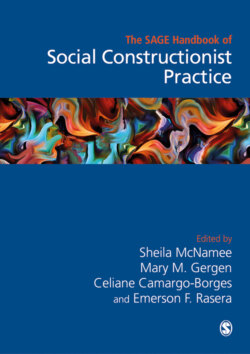Читать книгу The Sage Handbook of Social Constructionist Practice - Группа авторов - Страница 114
На сайте Литреса книга снята с продажи.
The Introduction
ОглавлениеIn this section, the students describe the initial intentions for this inquiry, and the aspects of their daily practice and/or their personal life that motivated them to do it. They usually go back and read the first writings they shared with their partners when they were trying to define the research question(s) and describe even their first set of ideas. They also explain how the question(s) got transformed during the inquiry process and the rationale for that transformation whenever that happened.
For example, Carolina shares with us how she was very clear about her topic being the experience of living with a son or daughter with a disability. However, something happened along the way that almost changed her focus. She explains it as ‘… one of the parts that most impacted my life, was motherhood. So when my son was born, I wanted to talk about all those things that are not said, when you have a child … also, I said, at this time, I hear about disability, but what I really want to respond is about motherhood. In the end, although it is not as expressed as such, the topic of the thesis finally had a broader vision of an identity that arose at the moment that I never thought that it would appear when I started, that is being a mother’.
It is also in this section where the students describe who the co-researchers are, what were the ethical agreements they had for this inquiry at the beginning as well as the changes that such agreements went through and their causes. They talk about the time it took them from beginning to end, and briefly describe the contents of each chapter or section.
